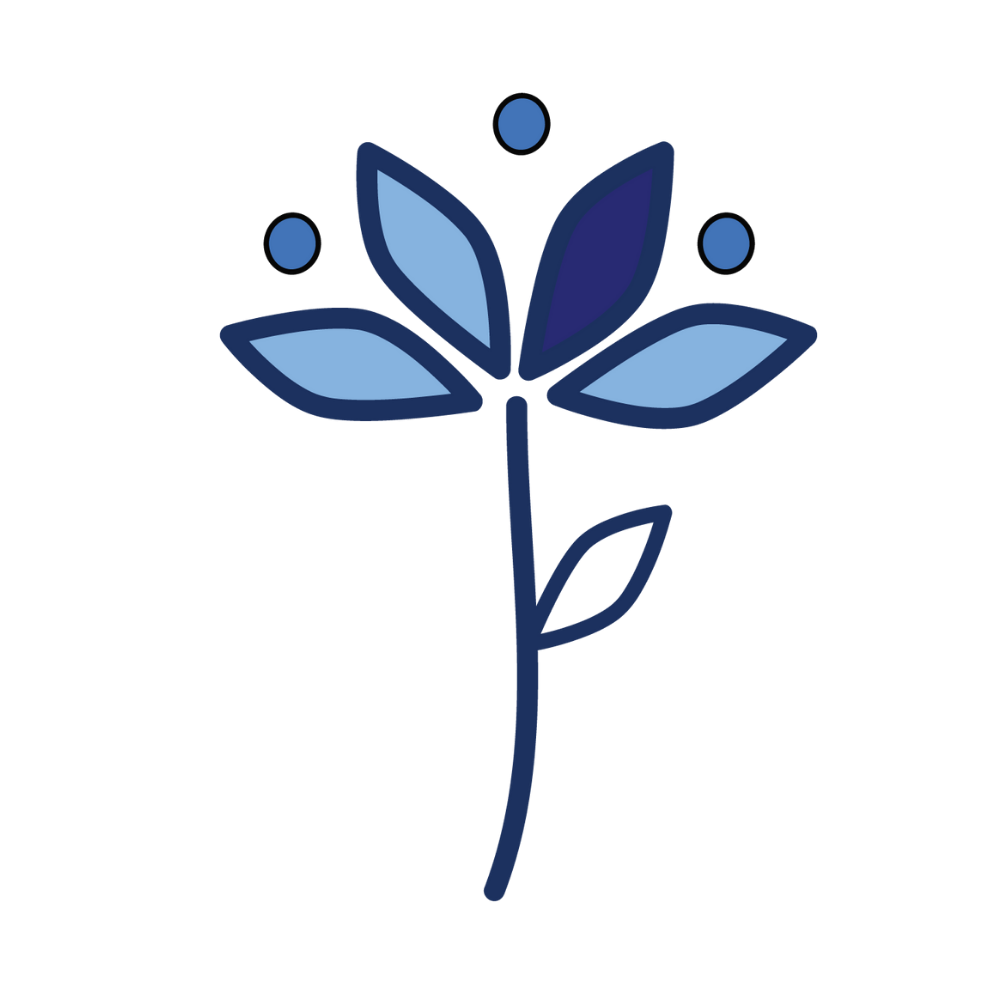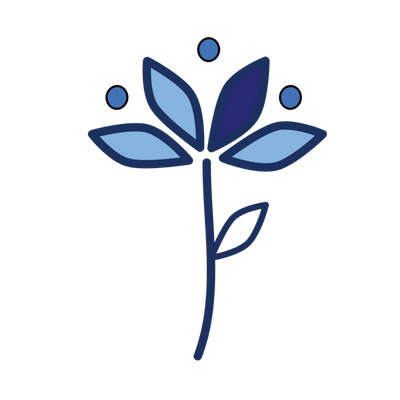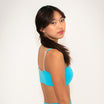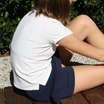Understanding Breast Bud Pain: A Comprehensive Guide

Puberty is a time of significant growth and transformation, and it often comes with its own set of questions and concerns. One of the first signs you might notice is the development of breast buds, which can sometimes be tender or even painful. Understanding what's happening to your body during this time can help you feel more confident and at ease.
In this guide, we'll explore why breast bud pain occurs and offer insights and advice to help you navigate this natural process with confidence and comfort.
What Are Breast Buds?
Breast buds are the initial lumps that form beneath the nipple, marking the onset of puberty. Typically appearing between the ages of 7 and 12, they are a natural developmental stage influenced by hormonal changes, specifically the release of estrogen and progesterone from the ovaries. These hormones are instrumental in the formation and growth of breast tissue.
Here's a bit more on how this works:
- Asymmetrical Growth: It's quite common for one breast to grow a bit faster than the other, creating a slight difference in size. But don't worry; the other one catches up eventually, balancing things out.
- Skin Sensitivity: The growth of breast tissue can cause the surrounding skin to stretch, leading to sensations of tenderness or mild discomfort. This is a normal bodily reaction to the ongoing changes.
How Can You Spot Normal Changes and When Should You Seek Guidance?
As you step into this new chapter, you may find that it's not just one or two changes you're experiencing – there could be a whole host of new developments unfolding. Being informed about what constitutes normal physiological transformations can be immensely relieving. It can dispel undue anxieties and help you focus on embracing these natural shifts rather than fretting over them.
Here, we outline the two primary indicators that are integral to the natural growth process:
|
Aspect to Monitor |
What to Expect |
Is it Normal? |
|
Observing Changes in Areola |
Small bumps or a few hairs may appear around the areola. |
Yes, these are natural signs of maturation. |
|
The Appearance of Stretch Marks |
Stretch marks may develop on your chest, hips, and upper thighs. They may initially be red or purple but gradually fade to match your skin tone. |
Yes, these are visual markers of the transition from childhood to adolescence. |
Embracing a proactive approach towards your well-being is vital. Regular self-examination can be a helpful practice, allowing you to monitor the changes your body is undergoing. Remember, consulting a healthcare provider for advice or addressing concerns is a step towards nurturing a healthy relationship with your body.
5 Ways to Manage Discomfort and Tenderness
As we have established, growing breast buds can sometimes be a bit sore. But the good news is that there are several ways to ease this pain.
Let’s discover relief with these five tips:
1. Selecting the Right Bras
One significant way to manage breast bud pain is by selecting the right kind of bras that provide adequate support without compromising on comfort. The right bra can act as a companion during this time, easing the transition and fostering confience.
Here are some standout options that you can explore:
Explore Supportive Training Bras With Bleuet
Bleuet presents a collection that serves as a young girl's ally in this transformative journey. Here are some of our offerings that combine utmost comfort with style:
- Bleum Bra: A staple that promises gentle support, making it a go-to choice for daily wear.
- Bleum Cami: A versatile piece that marries the coverage of a camisole with the support of a bra, ideal for those who are just beginning to wear bras.
- Iris Modal Soft Cup Bra: A trendy and supportive option that offers extra padding and a snug fit without sacrificing style.
- Bleuet Active Bra: A reliable choice for young girls engaged in sports, offering excellent support and preventing strain during physical activities.
2. Choose Comfortable Clothing
Selecting the right attire during this stage can make a world of difference. Opt for breathable fabrics that are gentle on your skin to minimize irritation. Garments with fewer seams and softer linings are also beneficial, reducing chafing and improving overall comfort.
3. Use a Warm Compress
Experiencing soreness? A warm compress can be a quick fix. Simply apply a warm cloth or heating pad to the tender area. This relaxes the muscles while also easing tenderness to provide a sense of relief.
4. Choose Nutrient-Rich Foods
Diet plays a crucial role in how your body manages changes during puberty. Consuming meals rich in essential nutrients like Omega-3 fatty acids, vitamin E, and antioxidants can help in reducing inflammation and tenderness. Therefore, incorporating foods like salmon, walnuts, and leafy greens into your diet could be highly beneficial.
5. Consult a Healthcare Provider
If the pain becomes too much to handle or if you have concerns, it's always advisable to consult a healthcare provider. They can offer personalized advice and may even recommend topical creams or medications that can help manage symptoms more effectively.
Bleuet: Navigating Milestones With You, Every Step of the Way

At Bleuet, we're not merely a brand; we're your ally on this pivotal journey to womanhood. What sets us apart is our unparalleled collection of ultra-soft, dual-layer first bras, meticulously designed for supreme comfort, unbeatable support, and top-tier quality.
We understand that puberty is a time of change, which is why we offer inclusive sizing from 8 to 24. This ensures that every young girl, regardless of body shape, finds her perfect fit. Our commitment to inclusivity extends to our range of neutrals crafted from organic, eco-friendly fabrics to match various skin tones. Additionally, ethical standards aren't an afterthought for us; they're our guiding principle. By collaborating with responsible manufacturers, we guarantee that each garment is as kind to the Earth as it is to you.
Moreover, we believe that the experience of buying your first bra should be empowering and memorable. That's why we offer free returns and exchanges, allowing you to find the perfect fit and style that boosts confidence. To make this milestone even more special, we've designed a unique unboxing experience that celebrates you.
Life's transitions are special, and having a brand you can trust by your side makes all the difference. With Bleuet, you're doing more than just buying a bra; you're gaining a partner who not only celebrates but deeply understands the complexities of this significant life stage.
Conclusion
The formation of breast buds is a normal stage in a young girl's physical development, although it can sometimes be uncomfortable. Understanding what breast buds are, why they occur, and how to manage the associated discomfort can make this transitional period less daunting. However, it's essential to remember that this is a temporary phase and part of a broader biological process. With the right knowledge and resources, both parents and children can navigate this stage with greater ease and confidence.
FAQs
Is it normal for breast buds to hurt?
Yes, it's quite common to experience some level of discomfort or tenderness when breast buds are developing. This is due to hormonal changes and the growth of breast tissue.
What helps sore breast buds?
Applying a warm compress to the affected area can help alleviate soreness. Additionally, wearing comfortable clothing and bras made from soft, breathable fabrics can also provide relief.
What is the average age for breast budding?
The average age for the onset of breast budding is between 8 and 12 years old. However, it's important to note that every girl’s body develops at its own pace, and some may experience it earlier or later.









Leave a comment